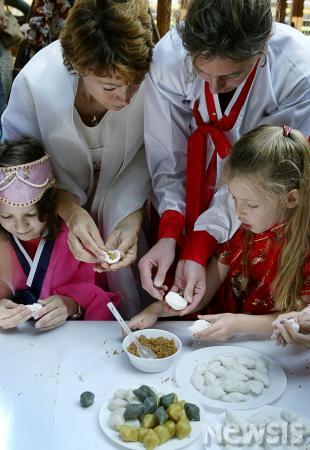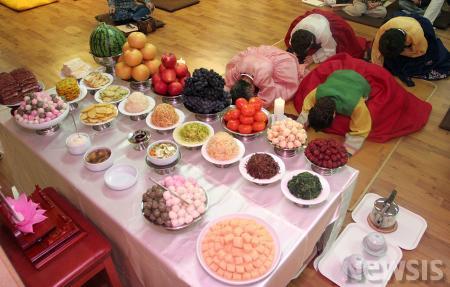Chuseok, the Korean Thanksgiving Day which falls on Aug. 15 by the lunar calendar (Oct. 2 by solar calender this year), is the most festive Korean holiday with a variety of festivals, traditional games, the exchange of gifts. It is one of the two biggest Korean holidays, so the day before and after Chuseok are appointed as holidays for facilitating transportation. Chuseok is a Chinese word, and it is called Hangawi in Korean. Hangawi refers to the moon in the middle of the fall, or center of August.
There isn’t any record or document which clearly explains the origin of Chuseok. In old Chinese documents, kings indulged in romantic pursuits and had bureaucrats shoot bows, giving the ones with good records rewards on Aug. 15. Also they made a deep bow to Gods of the Sun and the Moon, wishing a year of abundance. The Korean document, Samguksagi, which best explains Korean history, ensures that Chuseok has been a national holiday for hundreds of years.
What do we do during Chuseok?
There is an old saying, “No more, no less, just be like Hangawi.” Most farming is finished by early fall, so farmers get the rewards of their harvest: that is why Koreans celebrate when the time and season comes up.

In the new year, all Koreans eat Ddeokguk, a rice cake soup prepared with slices of rice cake, beef, eggs, etc. Then what do we have in Chuseok? It is Songpyeon, a rice cake steamed on a layer of pine needles. There are kinds of beans, chestnuts, and so on, in Songpyeon. As one of the traditional customs of Chuseok, on the day before Chuseok, every family member gathers in the kitchen and makes Songpyeon.
Charye
The ancestor-memorial service is at the center of the holiday. Dishes prepared with the newly harvested grain are offered to one’s ancestors as a way of thanking them for a bountiful harvest.

It is a Korean group dance with singing in a ring, symbolizing a full moon which means abundance. Women are considered as the subjects of production, highly related with abundance, so when women play Ganggangsulae under the full moon, it means we have reached the culmination of abundance.


